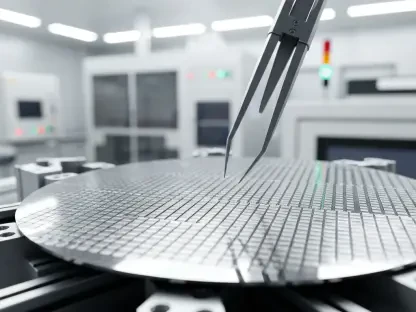In an era where technology drives personal and professional lives, finding devices balancing performance and affordability can be daunting. This challenge is met by products like the Redmi Pad 2, specifically designed as a media tablet catering to budget-conscious consumers. Released as part of Xiaomi’s lineup, the Redmi Pad 2 is positioned to attract individuals seeking seamless media consumption without breaking the bank. While its price tag naturally implies some trade-offs, the tablet surprisingly surpasses expectations, indicating why it has found favor among casual users.
Design and Build Quality
Aesthetic Appeal and Functional Design
At first glance, the Redmi Pad 2 impresses with a sleek, surprisingly premium build, belying its economic pricing. The aluminum body doesn’t just add to the aesthetic; it also ensures durability, making it an appealing option within its financial bracket. A frosted finish enhances the device’s tactile appeal while preventing unsightly fingerprints or smudges, a thoughtful design that budget offerings often forego. Available in three striking colors—Graphite Gray, Mint Green, and Lavender Purple—the choice caters to diverse tastes, underscoring a commitment to style without sacrificing functionality.
Thoughtful Ergonomics
The design maintains a committed focus on usability, integrating features to enhance user comfort during extended use. Although lightweight, the tablet provides a solid, reassuring feel that balances durability with ease of handling. Well-placed bezels reduce the risk of unintentional touches, a practical detail that enhances user experience. Additionally, the array of functional touches, including retaining a 3.5mm headphone jack, reflects a user-centric approach to design. Such features resonate with those desiring straightforward, practical devices, prioritizing essential usability over advanced but seldom-used features.
Display Quality
Visual Performance
The 11-inch LCD panel is a standout component of the Redmi Pad 2, offering a compelling visual display that defies its price category. Featuring a resolution of 2560×1600 pixels, the screen provides impressive sharpness that enhances clarity and detail, making it ideal for watching videos, reading, or gaming. The 90Hz refresh rate further enriches the viewing experience, ensuring smoother motion and reducing blur—qualities that cater well to media enthusiasts. Additionally, support for 10-bit color results in vivid, life-like images, captivating users with engaging visual experiences.
Managing Expectations
Despite its strengths, the display does reveal cost-based compromises. The absence of a laminated screen induces noticeable reflections, particularly under bright lighting conditions, which could interfere with visibility. Such drawbacks slightly mar an otherwise admirable screen, indicative of strategic balancing between cost and performance. Furthermore, the lack of an ambient light sensor necessitates manual brightness adjustments, posing convenience issues for users in varying lighting environments. These limitations, however, are framed against the device’s affordability, offering a mature perspective for budget-seeking consumers.
Performance and Usability
Efficient Everyday Computing
Under the hood, the MediaTek Helio G100-Ultra processor powers the Redmi Pad 2, capably supporting the device’s everyday functions. Routine use cases such as browsing, media consumption, and e-reading are handled adeptly, matching user expectations for a tablet at this price point. While intensive gaming or heavy multitasking stretches its capabilities, the performance remains respectable for lighter, casual activities. The implications are clear: the tablet is engineered for passive interaction, emphasizing efficiency in resource management over raw computational power.
Thermals and Practical Concerns
The device’s thermal management adds to its practical appeal, efficiently maintaining a cool profile even under extended usage. This focus on thermal performance aligns with its role as a media consumption tool, ensuring comfort and reliability during longer sessions. The tablet’s limitations in multitasking can be a notable challenge for users with diverse application needs. However, the intent is clear—an accessible platform for content enthusiasts, enabling fluid user experiences devoid of frustrating heat-related performance degradation.
Audio and Software
Sound Delivery
The Redmi Pad 2 doesn’t fall short in audio, featuring a four-speaker setup that delivers a robust sound experience, supported by Dolby Atmos technology. The configuration provides sufficiently loud output to fill a small room, enhancing clarity in dialog-heavy content and offering reasonable bass presence. While it may lack the depth of a dedicated speaker system, the result is respectable for a device in its class. Audio enthusiasts have the option to enhance experiences using wired headphones, facilitated by the ergonomic inclusion of a headphone jack.
User Experience and Adaptability
The software on the Redmi Pad 2, HyperOS 2 running over Android 15, continues the thread of practicality. With an intuitive interface and tablet-optimized features, users experience a straightforward ecosystem suitable for Xiaomi product enthusiasts. Useful integrations, such as call management and wireless sharing, extend the device’s versatility. Nonetheless, some constraints are evident—multitasking lacks refinement, as features like split-screen operation remain absent. This trade-off aligns with its core identity, a consumption-oriented platform rather than a multifaceted productivity tool.
Battery Life and Additional Features
Enduring Battery Performance
The tablet’s 9000mAh battery is central to its appeal, sustaining extensive media sessions or intermittent daily use without frequent recharges. This resilience serves programs and applications typical of media-oriented tablets, adding value for users requiring enduring battery life. However, its limited charging capability—capped at 18W—poses an inconvenience, with full charges extending nearly three hours. Such limitations require developed habits for planned charging, especially for frequent, on-the-move users.
Supplemental Features and Scope
In today’s fast-paced world, where technology plays a vital role in shaping both our personal and professional lives, the quest for gadgets that seamlessly blend performance with affordability is indeed a complex one. This intricate balance is achieved by devices such as the Redmi Pad 2, a media tablet tailored for budget-conscious buyers. Released within Xiaomi’s diverse product range, the Redmi Pad 2 aims to attract those who seek efficient media consumption without a hefty price tag. Naturally, a lower price might suggest a compromise on features, but this tablet still manages to exceed expectations. Its compelling performance despite its cost-effective nature explains why it has quickly gained popularity among casual users who might otherwise be distracted by pricier alternatives. The device serves as a testament that being frugal doesn’t mean settling for mediocrity in quality or functionality. These achievements, coupled with user-friendly features, affirm why the Redmi Pad 2 is truly a standout in the realm of affordable media tablets.









